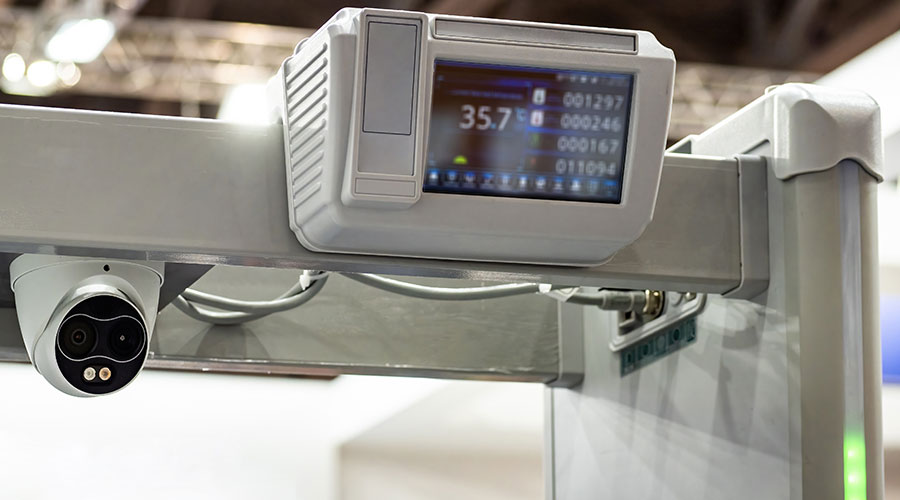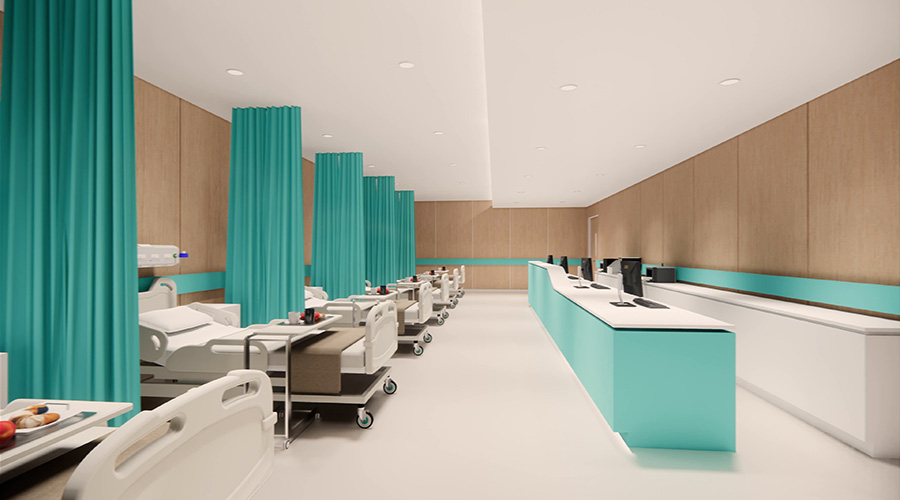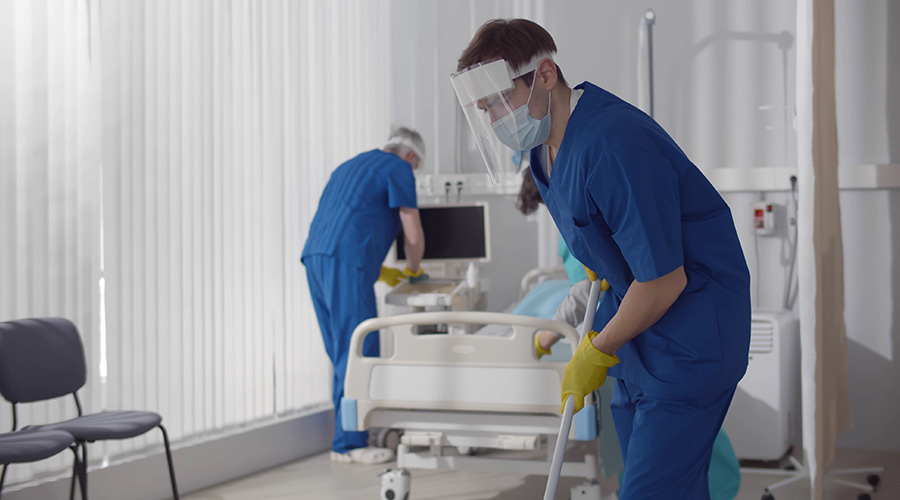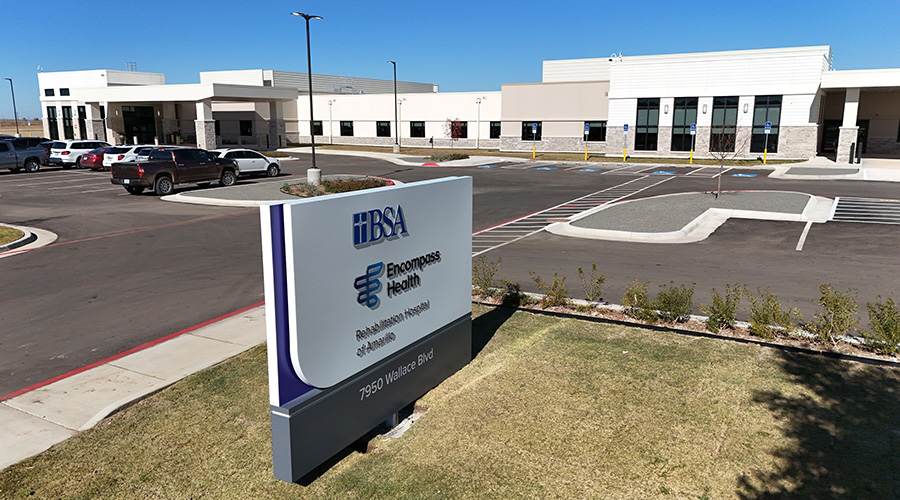Earlier this year, a Pennsylvania hospital made headlines after a man held four staff members hostage at gunpoint, resulting in the death of a police officer and several others being injured. The motive for the crime is still unknown, and many questions have been left unanswered, namely, how was a firearm let into the facility to begin with?
While laws vary by state, people are allowed to carry a concealed weapon in public in all areas of the country. According to Giffords Law Center, 21 states require a state-issued permit in order to carry concealed weapons in public, while the remaining 29 allow people to carry concealed weapons in most public spaces without a permit, background check or any safety training.
Incidents on the rise
Workplace violence within healthcare facilities has steadily increased in recent years. A study by Vivian found that healthcare workers are four times more likely to experience verbal or physical abuse while on the job compared to any other industry. Over 40 percent of respondents reported that they have experienced workplace violence against themselves or one of their coworkers in 2023, with 77 percent of incidents being perpetuated by the patient themselves and 41 percent by a family member. This number could be even higher as many incidents often go unreported.
“The topic of violence is becoming more of an issue, particularly in the United States,” says Noelia Bitar, healthcare sector leader at HED. “Emergency departments are one of the first areas that are prone to safety concerns because they are very public facing. It’s important to help people feel safe, whether it’s staff or patients.”
Design features can aid in security measures by having decentralized stations throughout the units that allow privacy amongst patients but also ensure that healthcare staff can tend to needs within a moment's notice.
“Often you can angle doors and access to rooms in corridors so that there’s no direct line of sight into when somebody’s walking through, but then with the angle you can provide access into views of the patient area,” says Bitar. “Monitoring is important, but there are design elements we can introduce to make people feel less observed and feel that they still have a sense of privacy and calmness that they are looking for while staff do their job.”
More hospitals and other healthcare facilities are beginning to address the recent increase in violence against their workers. Several facilities have added additional training for staff members and de-escalation tactics, while some facilities have created new policies that are widely posted throughout their campus prohibiting acts of abuse against their employees. Meanwhile, other hospitals have aided in filing comprehensive violence prevention legislation at the State House level.
“It’s hard for people to be screened, but one of the things that they’re (healthcare facilities) doing recently is using some of the same technology that is being used in airports,” says Bitar. “They’re using facial recognition, and it has been successful. In a lot of places, people can own guns and bring their guns to places if they want. Hospitals want to prevent that.”
In 2023, Duke University Health implemented a weapon detection system (WPS) across its three hospitals. Similar to what is used at public event venues, visitors and patients are required to walk through the WPS where it will be determined if firearms, moderately sized knives and other weapons are on their person.
“They are very similar to what you would go through at a sport events or concert,” says Mary Martin, chief operating officer, Duke University Health. “They are meant to be a quick walk-through scenario.”
Unlike a concert or a sporting event, bags can’t really be limited within a healthcare facility. Often times people bring luggage into the hospital because they are getting admitted for an overnight stay or surgery. Bags may contain comfort items brought from home, but also medications and other electronic devices.
Martin explains that everyone who enters the hospital is required to walk through the system without having to empty their pockets, open their bags or remove belts. If the alarm sounds, the person is then escorted over to a table where they are then searched.
“It got to a point for us where it’s almost as if the staff demanded it,” Martin says. “So, when you talk to the security personnel they will oftentimes give you a list of reasons why it isn’t foolproof, and we understand it’s not foolproof, but it is a good first step and making an active display that we do not want weapons in our hospital, and we’re going to screen you when you come in the door. I think that was an important first step for our team members.”
Prior to the mass installation of the WPS, Duke University Health had metal detectors within their emergency departments. Staff in this department in particular were trained in de-escalation and other means to help prevent workplace violence, but other areas within the hospitals weren’t as readily monitored. The new system has helped ease staff concerns as reports of violence continue.
Despite being met with the approval of staff members across Duke University Health’s facilities, many still questioned whether or not it is necessary for all staff to be screened before every shift as well. Martin explains that that the COVID-19 pandemic enabled facilities to control entry points, making it more realistic to put the WPS in public points of access.
“We have many other locations where staff by badge can also access,” Martin says. “We have other mechanisms for staff such as concerned behavior reports. So, we assess every six months whether we want to add that additional layer. We look at that data, we look at what’s out there and make those determinations.”
Surveillance, not Big Brother
Heavy surveillance within a healthcare facility can place additional stress on patients and staff members. It is not uncommon for some places to require that patients and guests walk through weapon detection systems and still check in with security to obtain a badge. While it may seem like overkill in the moment, it signifies that people followed protocol and are meant to be where they are.
“That is a really good visual for the staff to help us ensure we’re safe by making sure that everyone has a visitor badge,” Martin says. “Along with that, you have to have the conversation with the employees to not prop doors, don’t let anyone in without a badge trail you. There’s been a lot of education on that as well.”
The increase in security practice has also increased the need for security personnel. At Duke University Health, two security guards are posted at every screening location. Between the equipment and additional personnel, nearly $1.5 million has been added to the company’s expenses every year. But for Martin, that money is being well spent. Over 1,000 guns have been confiscated across the healthcare facilities. If the weapon is legal and the owner has a permit, they are able to pick it up after their appointment, but if it is illegal the proper authorities will be notified.
“The majority of people that we have confiscated guns from are women who forget they had a gun in their purse,” Martin says. “It was a scary realization for us that we had that many people in our walls that had guns, even if they weren’t intending to do harm at any point in time.”
Hospitals can be highly stressful places. In any event, someone could be receiving the worst news of their life. Highly emotional events can make people think and act erratically. Having an extra layer of security can help prevent
“You don’t want to have access to something that you could use in a fit of anger,” says Martin. “I think regardless of whether people were coming to do harm or not, I think that it’s been a good measure for safety.”
Mackenna Moralez is the associate editor for the facilities market.

 EV Charging Stations: Planning for Safety, Convenience, Expansion
EV Charging Stations: Planning for Safety, Convenience, Expansion Why Ambulatory Surgery Centers Are Turning to Dedicated HVAC Systems
Why Ambulatory Surgery Centers Are Turning to Dedicated HVAC Systems Ground Broken on UW Health University Row Medical Center
Ground Broken on UW Health University Row Medical Center Better, More Thorough Cleaning Saves Lives
Better, More Thorough Cleaning Saves Lives Encompass Health Opens the Rehabilitation Hospital of Amarillo
Encompass Health Opens the Rehabilitation Hospital of Amarillo